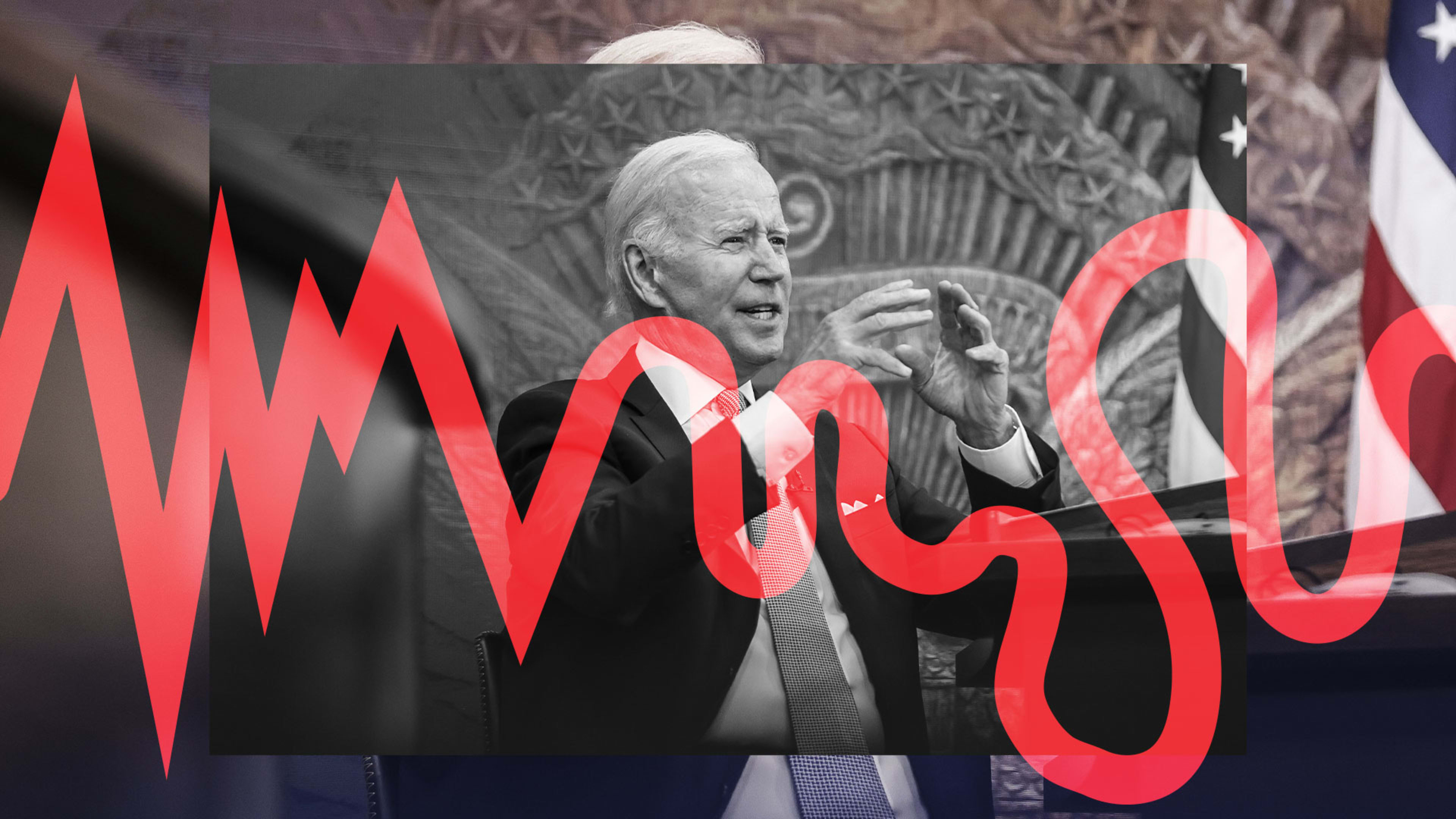With the news Thursday that, according to the government’s preliminary estimate, U.S. GDP growth was negative in the second quarter, the “are we in a recession?” debate is now in full swing. Many news outlets, including Fox Business, proclaimed that because this marks two consecutive quarters of negative growth, the U.S. has entered a “technical recession,” even as President Biden and his various spokespeople pointed to the fact that myriad economic indicators other than GDP growth are strong enough that the recession label doesn’t fit. That has led to accusations that the administration is attempting to change the definition of a recession for political purposes.
It might seem surprising that whether we’re in a recession is something people are arguing over, but that’s the inevitable result of two factors. First, there is no single definition of the term “recession.” The definition Fox Business cited—two consecutive quarters of negative GDP growth—is commonly used, but it’s not actually the “technical” definition, but rather a colloquial one that was coined by an economist named Julius Shiskin in 1974 in a piece published in The New York Times. The closest thing to an official definition is the one used by the Business Cycle Dating Committee of the National Bureau of Economic Research: “a significant decline in economic activity spread across the economy, lasting more than a few months, normally visible in real GDP, real income, employment, industrial production, and wholesale-retail sales.” But that requires subjective judgments—what constitutes “significant” and “across the economy”? Those aren’t always easy to make in the moment, which is why the NBER typically waits many months to make a pronouncement.
The other reason people can plausibly disagree about whether we’re in a recession is that the economy is in a profoundly weird place today, thanks in large part to the legacy and continued ripple effects of the pandemic (and the government stimulus policies put in place to help deal with it). Typically, it’s fairly clear when the economy hits a downturn: Most economic indicators point in the same direction. For the past six months, though, different economic indicators have been pointing in dramatically different directions. In fact, they’re so different that the debate over whether we’re in a recession obscures how strange the economy has been behaving.
Take, for instance, that simple measure of a recession: negative GDP growth over two quarters. The reality is that, at the moment, we don’t even know if the economy really did shrink over the first half of the year. Government GDP estimates are regularly revised, which is one reason the NBER waits before making any determination. And the data in the first quarter in particular was peculiar: While gross domestic product (the value of everything Americans, including corporations, produced) fell, gross domestic income (the value of everything Americans, including corporations, earned) rose. Those numbers sometimes diverge, but the gap in the first quarter was unusually large, and the fact that it was so big means it would not be surprising that as the data is revised, we’ll find that GDP actually rose.
Regardless, even if GDP growth was negative in the first two quarters, it’s hard to argue that over that period we saw the “significant decline in economic activity” that the NBER looks for. Recessions usually see consumers pull back sharply on spending, and businesses cut back on hiring and start laying people off. But the U.S. economy added roughly 2.7 million jobs in the first half of the year, almost 400,000 jobs a month on average.
Consumer spending continued to rise, even adjusted for inflation, and is now roughly back on trend with what it was pre-pandemic. Business investment has not taken a big hit. And while certain industries are now struggling–most obviously housing and retailers that made big bets on pandemic-era trends continuing–service industries, including most obviously travel businesses, are thriving. American consumers are unhappy, but are spending freely on air travel, hotels, and entertainment. And while retail spending has slowed, foot traffic in malls continued to rise year-over-year throughout the first six months of 2022.
The truth is that there is no really good historical analogy to what we’ve seen over the past six months. If anything, it feels a bit like the inverse of what we saw in early 2001, in the wake of the bursting of the tech bubble. Then, the U.S. economy didn’t actually have two quarters of negative economic growth. Yet the NBER nonetheless declared it a mild recession, because the decline in economic activity, including job losses, felt significant and widespread. Today, by contrast, even though economic growth may have shrunk mildly, the decline in overall economic activity has been hard to see. That all makes the use of the term “recession” feel beside the point, if not outright misleading. In a sense, it makes what we’re going through seem more normal than it actually is.
None of this means that the economy is in a great place. High inflation, and particularly high gas prices, has meant that everyone feels distressed and uneasy. But the real concern shouldn’t be with what has happened over the past six months, but rather with what might happen over the next six. With the Federal Reserve raising interest rates sharply in order to bring inflation down, what has been a kind of faux recession could all too easily become a real one.
Recognize your brand’s excellence by applying to this year’s Brands That Matter Awards before the early-rate deadline, May 3.
